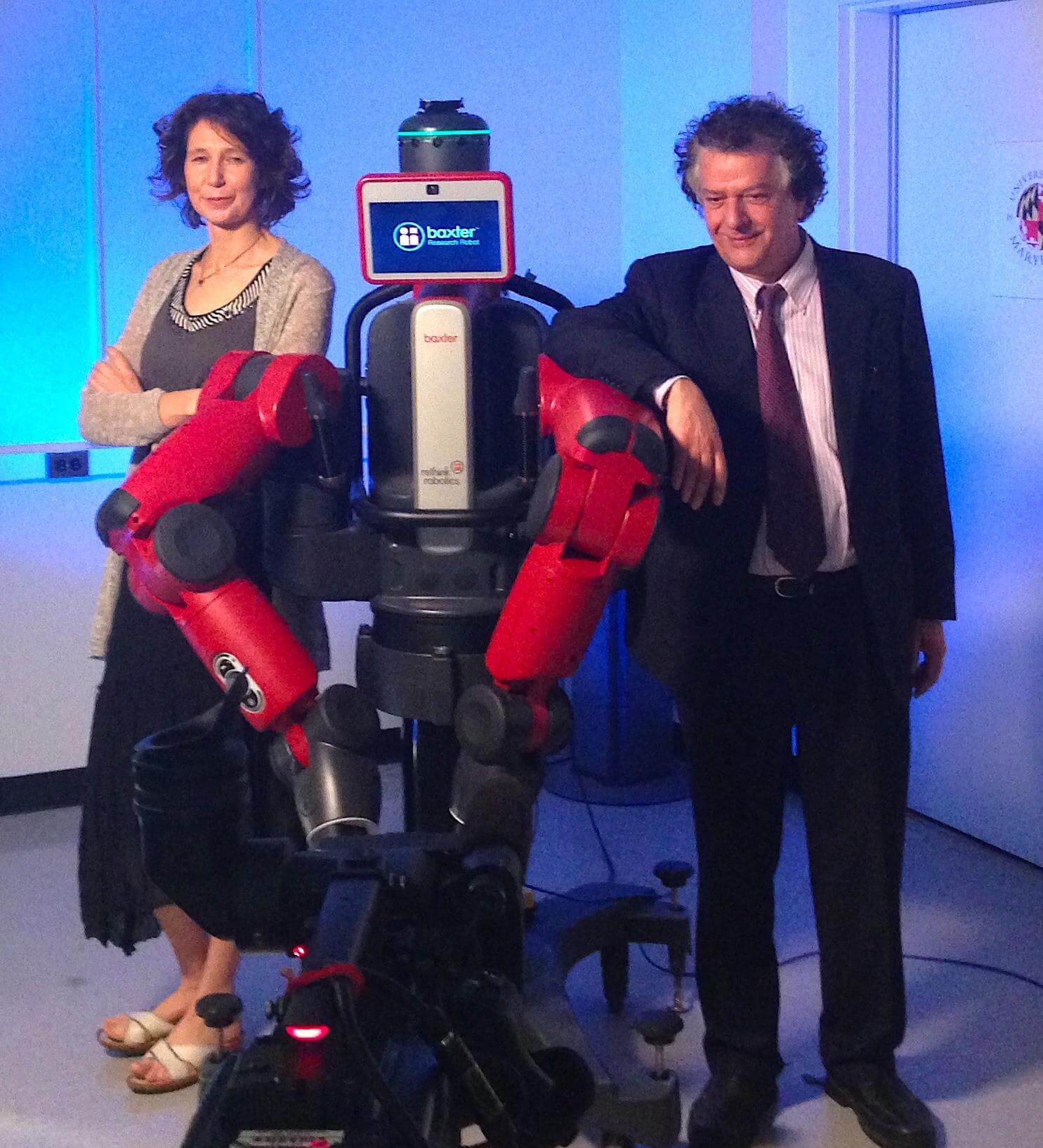 A team led by Yiannis Aloimonos, a professor of computer science with an appointment in the University of Maryland Institute for Advanced Computer Studies (UMIACS), and Cornelia Fermüller, an associate research scientist in UMIACS, just published a groundbreaking paper that introduces a new way of combining perception and motor commands in robots.
A team led by Yiannis Aloimonos, a professor of computer science with an appointment in the University of Maryland Institute for Advanced Computer Studies (UMIACS), and Cornelia Fermüller, an associate research scientist in UMIACS, just published a groundbreaking paper that introduces a new way of combining perception and motor commands in robots.
“Learning Sensorimotor Control with Neuromorphic Sensors: Toward Hyperdimensional Active Perception” investigates a new computing theory that could fundamentally alter and improve the basic artificial intelligence (AI) task of sensorimotor representation—how agents like robots translate what they sense into what they do.
The paper—published on May 15 in the journal Science Robotics—was co-authored by computer science doctoral students Anton Mitrokhin and Peter Sutor, Jr., both of whom are advised by Aloimonos.
In their paper, the researchers note that integration is the most important challenge facing the robotics field today. A robot’s sensors and the actuators that move it are separate systems, linked together by a central learning mechanism that infers a needed action given sensor data, or vice versa.
The cumbersome three-part AI system—each part speaking its own language—is a slow way to get robots to accomplish sensorimotor tasks. The next step in robotics will be to integrate a robot’s perceptions with its motor capabilities. The team’s paper is paving the way for that technological advancement.
In unveiling their new computing theory, the researchers say that a robot’s operating system would be based on hyperdimensional binary vectors (HBVs), which exist in a sparse and extremely high-dimensional space. In this system, action possibilities, sensory input and other information occupy the same space, are in the same language, and are fused, creating a kind of memory for the robot.
This paper marks the first time that perception and action have been integrated.
Emerging Technologies